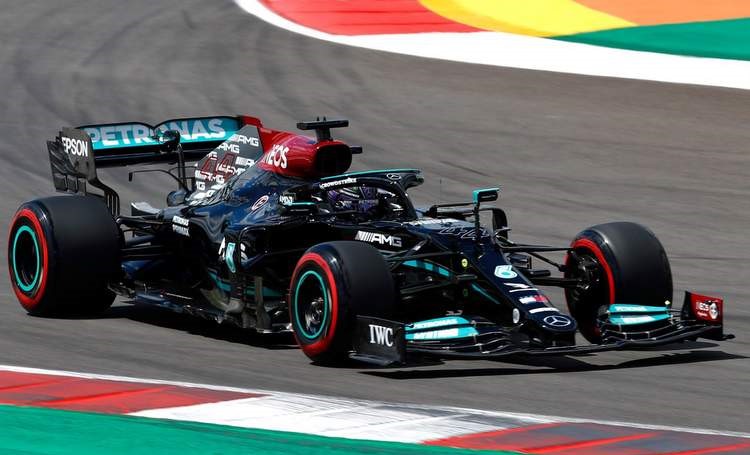After his difficult morning session, Lewis Hamilton bounced back to top the second practice session for the Portuguese Grand Prix, followed by Red Bull’s Max Verstappen who ended up 143 thousands of a second down on the Briton’s benchmark time.
At the beginning of the session, air temperatures were 19 Celsius degrees with track temperatures being registered at 39 Celsius degrees, albeit the strong wind continued to present a slight distraction to the drivers.
Most of the drivers started their afternoon session at Portimao on the yellow-banded Pirelli tyre with only Haas driver Nikita Mazepin opting for the Hard compound. At the end of the first runs, Bottas found himself on the top of the leaderboard, setting a benchmark of 1m20.423 on the medium compound. However, Max Verstappen came back on the medium compound he used during his first stint to jump to the top with a time of 1m20.322.
Mercedes drivers were the first to be equipped with the red-banded soft compound. Interestingly, neither of them found a huge improvement on the soft compound with Hamilton registering the better time with a 1m19.837. His team mate failed to get close to Hamilton with Bottas posting a 1m20.181.
The Red Bulls were late to join the party on the soft compound. Verstappen found just under four tenths of a second on the fresh, brand-new soft compound and failed to endanger Hamilton’s benchmark time. His team mate Sergio Perez struggled for one-lap pace in the afternoon and finished down in P10 with his best time being over six tenths of a second down on the seven-time world champion’s time.
Ferrari and Alpine continued to impress in the second practice session with Carlos Sainz registering the fourth fastest time with a time of 1m20.197. Despite his strong pace during his race simulation, Charles Leclerc failed to extract the maximum of his SF21 over one qualifying simulation lap on lower fuel load, finishing seventh quickest.
Two-time world champion Fernando Alonso headed the Alpine duo by beating his team mate Esteban Ocon only by 15 thousands of a second.






